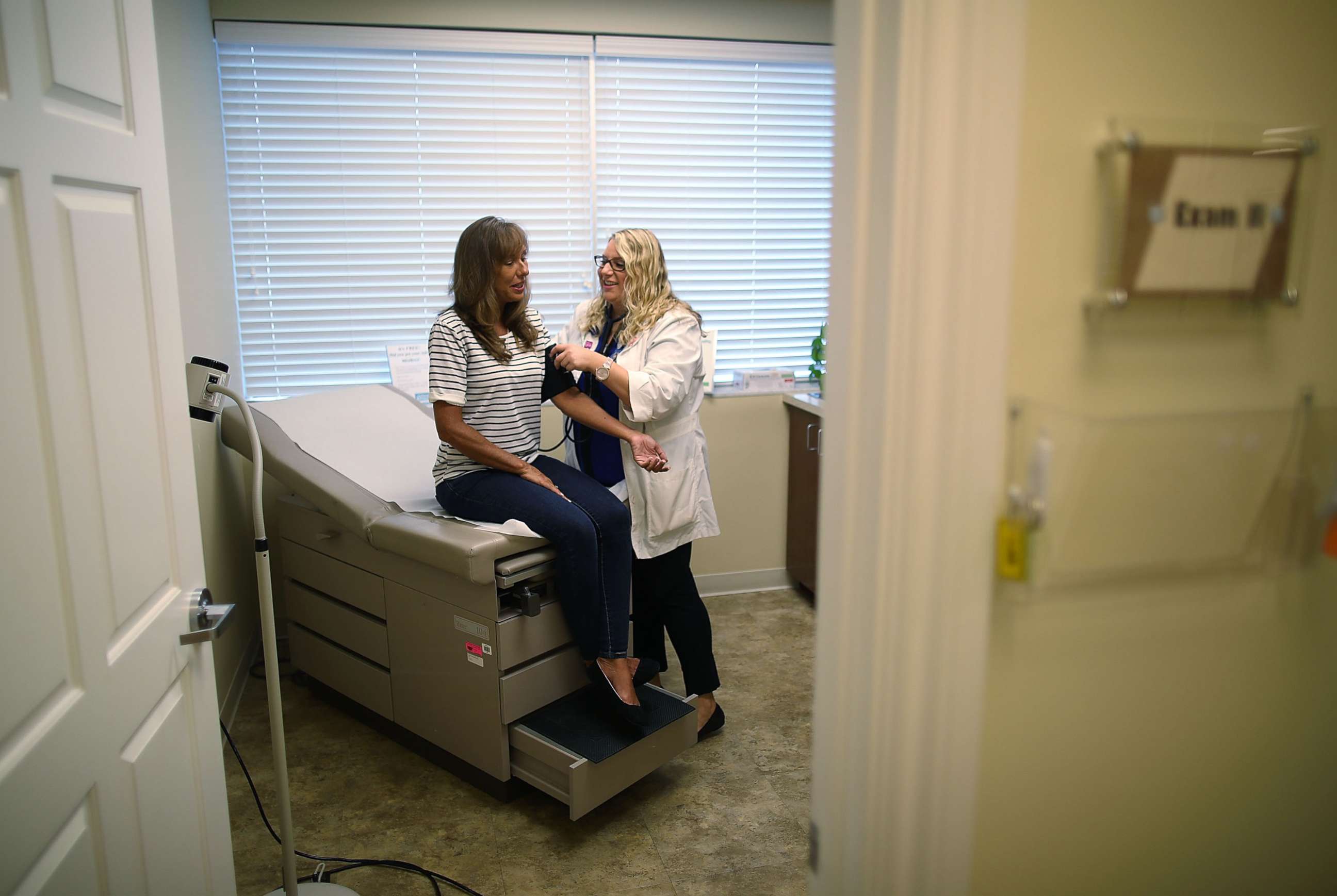ANALYSIS: Health care spending changes are critical to fix the system
The U.S. spends almost twice as much per person as other countries, reports say.
— -- This is the second article in a five-part series.
If there is one statistic you should memorize about American health care, it is this: We Americans spend about twice as much per person vs. the averages in all other developed countries.
The national health care expenditure in 2015, the latest tallied, was nearly $10,000 per person and almost 18 percent of total spending, according to the Department of Health and Human Services. That's about double the per-person spending of other developed countries, the Organization for Economic Cooperation and Development says.
May 1, 1990: Health care in the US vs. health care in Canada
Now, if we lived twice as long or had outcomes twice as good — cancer and heart attack survival, infant and mother survival, etc. — we could justify those stunning differences. But we don’t. In fact, in some areas, we come out worse than other countries and in no area are we significantly better.
So the $3.2 trillion question, that’s how much we spent on health care in 2015, is why Americans spend so much more with little to show for all that extra money?
Read articles in this series:
Part 1: ANALYSIS: 3 health care problems could shape the next decade
Part 3: ANALYSIS: Health care quality will improve for all, if we have a federal watchdog
Part 4: ANALYSIS: Health care should be a right, but the US doesn't have a system
Part 5: ANALYSIS: The 2 options for US health care likely to emerge in the next decade
One major reason is that we Americans have been raised at the altar of scientific miracles with the expectation that the newest treatment, device or drug is automatically the best and therefore something we must have. I remember vividly how I learned the painful lesson that this thinking is often wrong — and even dangerous.
Back in the early 1990’s, some leading American breast cancer experts were advocating the use of bone marrow transplants for advanced breast cancer, versus the standard chemotherapy then available. Because these were true experts, we in the media interviewed them and reported on their ideas.
Predictably, American women with advanced breast cancer, and their families, were soon demanding this expensive and dangerous treatment.
But it wasn’t until 1999 that researchers finally presented data that unequivocally demonstrated that bone marrow transplant was no better than standard chemo. Doctors stopped doing it almost overnight, but in the meantime, more than 30,000 American women had received this costly and harrowing treatment.

That’s a phenomenon all too common in this country: introducing new treatments, devices, tests, etc. before there is real proof they are better or safer than what we already have. And that practice, combined with the overuse of many established and expensive treatments and tests, leads many health economists to estimate that about a third of what we spend on health care in this country is unnecessary — meaning there is no proof that makes any significant difference in outcomes for patients.
Now think about that. A third of $3.2 trillion is more than $1 trillion. That would be enough to provide basic health insurance to all Americans. So why don’t we just take that money being apparently wasted and spend it on proven health care for Americans without health insurance? As you might expect, the answer is complicated.
First, and maybe foremost, most of that "unnecessary" money supports honest, hard-working Americans employed in medical support who pay taxes and contribute to the American economy. (Some unknown amount goes to criminals committing fraud and they should be in jail.)
So even if much of this money is not giving us better health, it is providing many jobs. And no politician wants to vote for changes that would eliminate jobs, which means that any real cost reform has to be done carefully and thoughtfully over a long period, identifying those whose jobs would be threatened and retraining them for other jobs.
That kind of change requires a political process willing to make difficult bipartisan decisions rather than constantly taking the low road and blaming the other party. But, given the recent track record of how the Trump administration and Congress have been working together, I am not holding my breath.
For most of the past several decades, health care costs in this country have risen about two times the general inflation rate, according to the Federal Reserve Bank of St. Louis. If that continues, we will eventually face true financial disaster.
Unless we Americans figure out some form of politically palatable cost control, our kids will face terrible trouble. More in my next essay.
This is the second in a five-part series. Read other articles in the series below:
Part 1: ANALYSIS: 3 health care problems could shape the next decade
Part 3: ANALYSIS: Health care quality will improve for all, if we have a federal watchdog
Part 4: ANALYSIS: Health care should be a right, but the US doesn't have a system
Part 5: ANALYSIS: The 2 options for US health care likely to emerge in the next decade
Dr. Tim Johnson was the chief medical editor for ABC News from 1984 to 2009.




